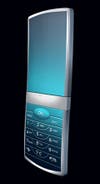THE FUTURE OF WORK Pimp Your Cube 2017
The ultimate self-adjusting office chair plus seven more concepts that will make your daily grind a little smoother
For a look at seven more future-cube gadgets, launch the slideshow here
Your mother was wrong: Sitting up straight is bad for you. Scottish radiologists confirmed in a study last year that a 130-degree angle of recline between torso and thighs reduces pressure on the discs in the lower back. This (and its sleek design) is why the ubiquitous Aeron chair was so ahead of its time in 1994. It deeply reclined by pivoting at the hips.
But designers find that the features of chairs like the Aeron are lost on most sitters. The array of levers and knobs-recline tension, lumbar support, seat-pan depth, forward tilt-are commonly ignored by users, who only think to change the chair´s height.
This neglect has manufacturers such as Herman Miller and Humanscale looking toward the next frontier: a self-adjusting chair. â€We´re working on a chair that will listen to who´s sitting on it and adjust itself to their weight,†says Bill Dowell, director of research at Herman Miller, which makes the Aeron. Humanscale´s Freedom chair includes a counterbalance system that adjusts itself like scales to the sitter´s weight as he or she reclines, eliminating the need for recline controls.
Or perhaps the chair of the future isn´t one at all. Chairs contribute in part to the high rate of back pain, which, according to the National Institutes of Health, affects eight out of 10 Americans. â€Our notion of a machine for sitting may not make sense in a globalized world,†says Herman Miller designer Cameron Campbell. Galen Cranz of the University of California at Berkeley points out in her book The Chair that the Indian practice of squatting and the Muslim practice of stretching five times a day to pray have great ergonomic benefits. Ten years from now, one worker may settle into a low recliner, another will kneel on a soft carpet, and they´ll talk across a pile of office cushions.-Peter Hall

Pocket Library

One Pen for Everything

Transparent Monitors

Cordless Power

Friendly Locks

Super-Helpful Phone

Never Lose Another Memo